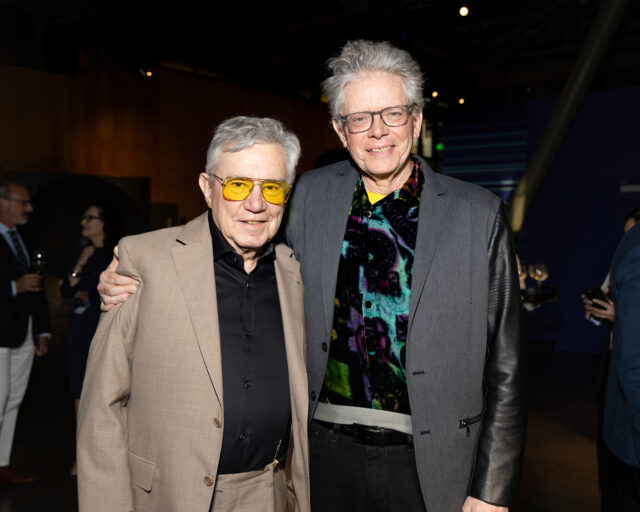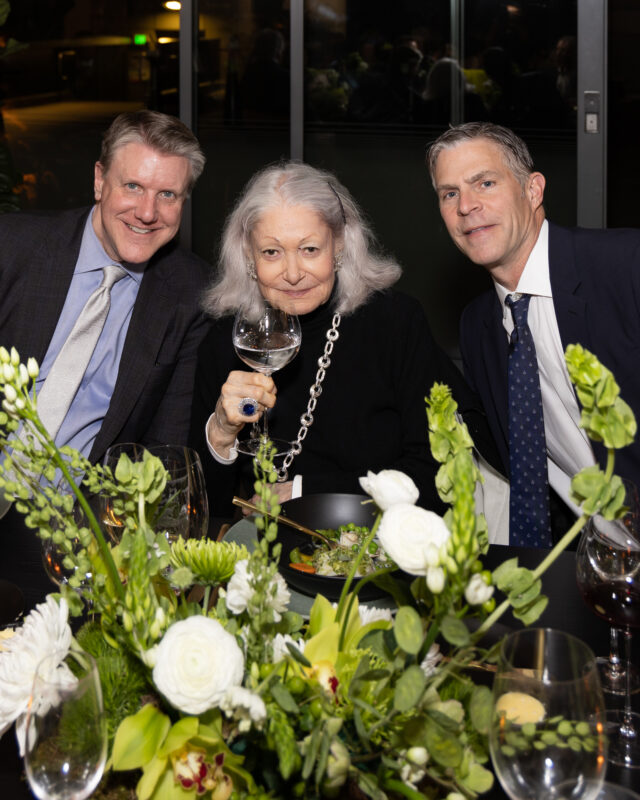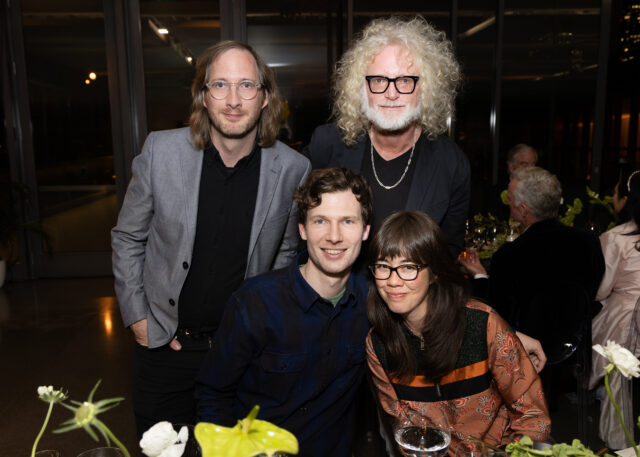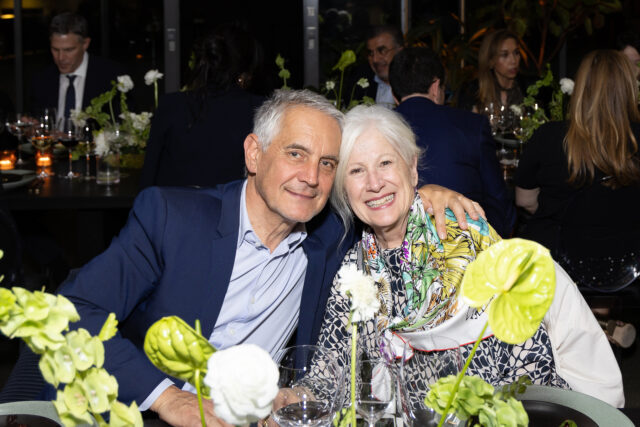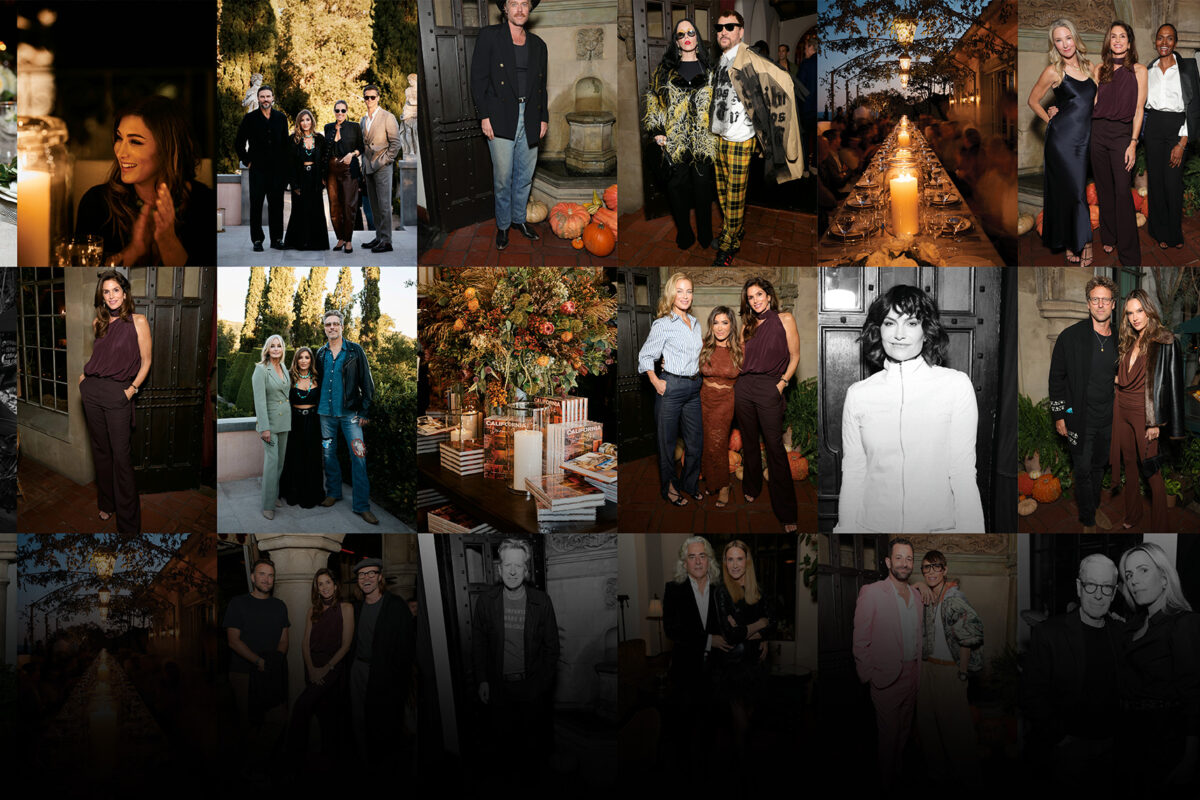An exhibition and film that capture the songs of nature
Words by CATHERINE BIGELOW
Photography by AGENCY MOANALANI JEFFREY
Lindsay Bierman, Bernie Krause, and Hérve Chandès.
Amid the swinging San Francisco 1960s, visionary musician and pioneering sound engineer Bernie Krause helped define the era’s distinctive sound. In 1967, with collaborator Paul Beaver, Krause introduced the Moog synthesizer (developed by Robert Moog) to hipoisie performing at the storied Monterey Jazz Festival. They ushered in a psychedelic reverberation employed by titans from Led Zeppelin, The Beatles, and Coldplay to Alicia Keys and Carlos Santana.
In June, Krause was honored for a different aural achievement when The Exploratorium and Fondation Cartier Pour L’Art Contemporain (Paris) unveiled the West Coast premiere of The Great Animal Orchestra.
Encompassing a half-century of Krause’s bio-acoustic environmental recordings, the exhibition and a companion film document his passion to capture the songs of nature.
To celebrate the launch, a soirée was held at The Exploratorium, the vaunted hands-on science museum and public learning lab founded in 1969 by San Francisco physicist Dr. Frank Oppenheimer.
Co-hosted by Exploratorium executive director Lindsay Bierman and Hervé Chandès, artistic managing director of Fondation Cartier, the fête featured an exhibition preview followed by a curated pescatarian-vegetarian dinner reflecting Krause’s theme of sustainability. Among the 115 guests were representatives from the worlds of music (Kronos Quartet’s David Harrington), glamour (socialite and philanthropist Denise Hale), and culture (French Consul General Frederic Jung, who earlier in the day bestowed Krause with France’s Chevalier medal of the Ordre des Arts et des Lettres).
“The Great Animal Orchestra occupies a unique place in the artistic direction of Fondation Cartier,” explained Chandès, via video link from Paris at the press preview. “It’s a meeting point of art, science, beauty, knowledge, and, of course, the warning about the downfall of the living world, biodiversity, and the beauty of life itself.”
Inspired by Krause’s 2012 book, The Great Animal Orchestra, Chandès commissioned an immersive installation that embarked on a world tour in 2016. Working with Krause, Chandès chose seven of his soundscapes from threatened global habitats, representing the sonic songs of some 15,000 terrestrial and marine species, including frogs, humpback whales, elephants, and birds. These “biophonies” — Krause’s coinage for his wildlife concerts — are also represented in the foundation’s permanent collection.
But of the 5,000 recording hours in Krause’s archive, the bioacoustician estimates more than 50 percent of those sounds are now gone. “These habitats are either altogether silent or they can no longer be heard in their original form,” he says. “We’re not talking individual creatures that are disappearing at a rate of seven to eight per day. We’re talking about whole habitats, and with them a way of life and expression that’s really key to our survival.”
Within the museum’s black-box theater, scrolling spectrograms — developed by London-based United Visual Artists (UVA) — envelop rapt viewers in a multisensory experience derived from Krause’s environmental sound work.
Krause — a longtime San Francisco turned Sonoma County resident, who has also scored numerous Hollywood blockbusters, including Apocalypse Now — made his inaugural field recording in 1968 north of San Francisco in Muir Woods. And he is beyond thrilled, he joked, that his Orchestra is finally premiering in his hometown: “It’s about damn time!”
The Great Animal Orchestra is on view through October 15 at the Exploratorium, Pier 15, San Francisco. exploratorium.edu.
Bernie Krause and David Harrington.
Greg Bishop, Denise Hale, Stanley James Rogers.
Clockwise from top left: Berry Threw, Steven Sacks, Jenny Odell, Joe Veix.
Hervé Chandès and Katherine Krause.
Feature image: The Great Animal Orchestra.
June 30, 2023
Discover more PARTIES news.




